
OUR SERVICES
Explore the Many Services Performed by WES
Below is a list of our services created to help educate you, our customers and trade partners, in identifying the best possible solutions for your projects.
In the state of Florida, insulation and protective coatings are essential due to the region’s extreme climate conditions. Proper insulation helps regulate indoor temperatures, reduce energy consumption, and prevent moisture intrusion that can lead to mold and structural damage.
Similarly, waterproof coatings add a critical layer of defense against wind-driven rain and water seepage, protecting roofs, walls, and vulnerable surfaces. Together, these systems extend the life of a property, improve indoor comfort, and help Floridians maintain energy-efficient, resilient structures year-round.
Old Insulation Removal
Insulation removal is the process of safely extracting old, damaged, contaminated, or underperforming insulation from a structure. Wild Elements Solutions offers professional removal services to ensure your home or building is clean, safe, and ready for new, efficient insulation installation. This service often includes customized removal services depending on the type of project. Depending on the scope of the project, the removal is often performed in attics, crawlspaces, wall cavities, and commercial ceilings and retrofits.
Why Is Removal Important?
Old or contaminated insulation can harbor mold, rodent droppings, allergens, and moisture, reducing your home's energy efficiency and potentially harming indoor air quality. Removal ensures a clean slate for effective, modern insulation solutions.
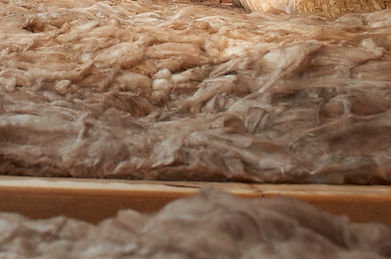
RESIDENTIAL / COMMERCIAL | VALUE = Most clients report a measurable drop in airborne irritants and allergens after insulation removal and replacement.
General Uses: Consumers often have old insulation removed when preparing for upgraded insulation, addressing moisture or pest issues, health-related remediation, insurance claims due to damage, and property restoration.
Did You Know?
Before modern removal methods, degraded or damaged insulation was often left in place leading to compounded energy loss and health issues. Today, thanks to advances in removal technology and awareness of indoor air quality, insulation removal is a key step in restoring and upgrading a property’s energy performance while improving the air you breathe.
Eco-Friendly Sanitization Fogging
Eco-friendly sanitization fogging is a treatment process that uses plant-based or non-toxic disinfectants dispersed in a fine mist to sanitize enclosed areas. At WES, this service is offered as part of our insulation removal and replacement process to help ensure your attic or affected space is not just rebuilt—but refreshed and made healthier for occupants. Areas often in need of fogging include attics, crawl spaces, wall cavities after insulation removal, and areas affected by rodent infestation or water damage.
How Does It Work?
Using a professional fogging machine, WES technicians distribute the fine mist throughout the designated area after the removal of old insulation and before new materials are installed. The fog reaches into cracks, crevices, hard-to-reach spaces, ensuring a complete sanitization of the space.
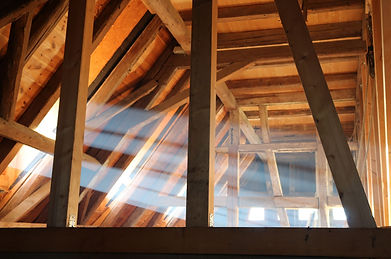
RESIDENTIAL / COMMERCIAL | VALUE = Directly supports the health benefits of insulation work by removing contaminants from the environment.
General Uses: Eco-friendly fogging is ideal for prepping attics after rodent contamination, neutralizing allergens and bacteria before new insulation, homes where air quality is a health concern, and commercial buildings seeking a fresh start after damage.
Why Choose Eco-Friendly Sanitization Fogging?
Homeowners and businesses choose this service because it provides a deep clean with minimal disruption, it’s free of harmful chemicals and safe for sensitive environments, it supports healthier indoor air quality, neutralizes odor and airborne pathogens, and ensures the new insulation is installed in a clean, contaminant-free space.
Did You Know?
Sanitization fogging has roots in medical and agricultural industries, originally developed to disinfect hospitals and food facilities. Over time, the technology adapted for home use—especially in response to rising concerns about allergens, indoor air quality, and virus transmission. Today’s eco-friendly solutions reflect a growing demand for wellness-focused home services.
Air Sealing
Air sealing is the process of closing gaps, cracks, and penetrations in a building’s envelope to prevent unwanted air exchange. This service improves energy efficiency, reduces indoor air contaminants, and helps regulate indoor temperature for increased comfort. Air sealing can involve a combination of materials depending on the location and size of the air leaks, including spray foam which expands to fill gaps and hard-to-reach areas, weather stripping can be used around movable joints such as doors and windows, sealant / caulking applied to joints, seams, and stationary gaps, and waterproof coatings used to seal exterior surfaces such as roofs and walls. Wild Elements Solutions often seals attics and crawl spaces, around windows and doors, rim joists, wall cavities, utility penetrations (pipes, vents, wiring), garage to home connection points, and the building exterior (coatings).

RESIDENTIAL | Value = Air sealing when combined with insulation, can significantly improve the thermal performance of a structure by reducing air leakage.
General Uses: Wild Elements Solutions identifies leak-prone areas. Air sealing is ideal for increasing energy efficiency and lowering utility costs, improving indoor comfort and temperature consistency, enhancing air quality by blocking out dust, allergens, and pollutants, supporting the performance of insulation, and protecting structures from moisture infiltration and humidity damage.
Why Choose Air Sealing?
Property owners choose air sealing to achieve long-term energy savings, reduce strain on HVAC systems, minimize outside noise and indoor drafts, prepare buildings for insulation upgrades or energy audits, and increase the durability and longevity of the structure.
Did You Know?
Before modern materials, early builders used mud, straw, or even animal skins to block drafts and insulate homes. As construction standards evolved, weather stripping and caulking became standard practices in the mid-20th century. Today, advanced materials like spray foam and exterior coatings have revolutionized air sealing, turning it into a key component of energy-efficient building design.
Blown-In Insulation
Blown-in insulation, also known as loose-fill insulation, consists of tiny particles of insulating material (usually fiberglass or mineral wool) that are blown into attics or wall cavities using a special machine. It is one of the most effective and efficient ways to insulate existing spaces and hard-to-reach areas without the need for major construction. You will find blown-in insulation typically used in attics (open or enclosed), wall cavities (especially retrofit applications), floors over unconditioned spaces, cathedral ceilings (if properly vented).
How is it Installed?
Blown-in insulation is installed using a blowing machine that feeds the material through a hose and disperses it evenly across the desired space. It can be installed in open attics, enclosed walls (with drilling), or floors over crawl spaces. The process is relatively fast, clean, and minimally disruptive.
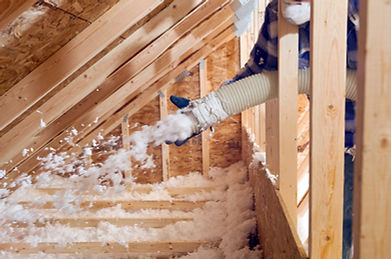
RESIDENTIAL | R-VALUE = The R-value depends on the material used. *Fiberglass: ~ R-2.2 to R-2.9 per inch *Mineral Wool: ~ R-3.0 to R-3.3 per inch
General Uses: Blown-in insulation is ideal for retrofitting older homes, filling gaps in existing insulation, enhancing energy efficiency, reducing heating and cooling bills, and minimizing noise transfer between floors or rooms.
Why Choose Blown-In Insulation?
Consumers often choose blown-in insulation because it can easily insulate irregular or hard-to-reach spaces, it's cost-effective and fast to install, it can be added over existing insulation to boost performance, and it’s environmentally friendly options like recycled fiberglass materials.
Did You Know?
Blown-in insulation gained popularity in the 1970s during the energy crisis when homeowners sought affordable ways to increase efficiency. Ancient civilizations used mud, straw, or wool to insulate homes. In some older constructed homes, WES finds and removes rolled up old newspaper used as insulation. The modern mechanical blowing machine was a game changer, allowing mass retrofits of homes without costly remodeling.
Open Cell Spray Foam
Open cell spray foam is a light-density insulation material made from a combination of isocyanate and polyol resin, which react to create a lightweight foam with millions of tiny air bubbles. These bubbles remain open, making the foam soft and spongy.
How is open cell spray foam installed?
Before applying open-cell spray foam, Wild Elements Solutions prepares the surface by ensuring it is clean, dry, and free of dust, debris, or oil to allow for proper adhesion and maximum performance. Open cell spray foam adheres to surfaces and expands rapidly to 100 times its liquid volume after application to fill wall cavities, attic rafters, roof decks, between floor joists, crawl spaces, and other building cavities. The open-cell structure allows for flexibility and sound absorption (e.g., when installed between rooms or floors) while offering thermal performance.

RESIDENTIAL / COMMERCIAL | R-VALUE = Open cell spray foam typically has an R-value of approximately R-3.5 to R-3.7 per inch.
General Uses: Open cell spray foam is ideal for interior walls and roof decks, areas where sound dampening is important, and buildings in need of air sealing without moisture barrier requirements.
Why Choose Open Cell Spray Foam?
Consumers choose open cell spray foam because it provides excellent air sealing, it's cost-effective compared to closed cell foam, contributes to noise reduction, and expands significantly, making it great for irregular or hard-to-reach spaces.
Did You Know?
Spray foam insulation was originally developed in the 1940s for military applications, including aircraft construction. It wasn’t until the 1980s that open cell spray foam became commercially viable for home insulation. Its rise in popularity corresponds with growing awareness around energy efficiency, indoor air quality, and sustainable building practices.
Closed Cell Spray Foam
Closed cell spray foam insulation is a high-density polyurethane foam that expands upon application to create a rigid, durable barrier against air, moisture, and temperature transfer. Unlike open cell foam, it is dense enough to add structural strength to a building. Closed cell spray foam is made from a two-part liquid mixture that reacts chemically when sprayed. The foam hardens into a closed cell structure that is impermeable to water and vapor. Closed cell spray foam is typically installed on walls, roof decks, attics, crawlspaces, and metal buildings.
How is closed cell spray foam installed?
Closed cell spray foam is applied by Wild Elements Solutions using a spray gun system. It is sprayed directly onto surfaces where it expands, hardens, and seals all gaps and cracks. Protective gear and ventilation are essential during installation due to the chemical reaction.
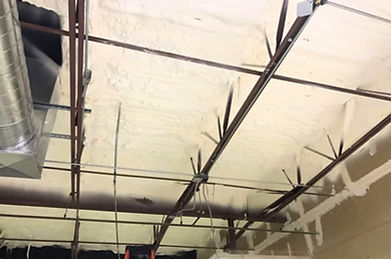
COMMERCIAL / RESIDENTIAL | R-VALUE = Closed cell spray foam offers one of the highest R-values in insulation: ~ R-6.5 to R-7.0 per inch
General Uses: Closed cell spray foam is ideal for commercial and industrial buildings, residential applications where moisture protection is key, enhancing structural integrity in walls and roofs, and coastal or humid climates where moisture is a concern.
Why Choose Open Cell Spray Foam?
This insulation type is chosen for superior insulation performance in tight spaces, excellent moisture resistance and vapor barrier properties, ability to strengthen the building structure, long-lasting performance without sagging or settling, and improved indoor air quality and energy efficiency.
Did You Know?
Spray foam was first developed in the 1940s and saw widespread use starting in the 1980s as energy efficiency standards increased. Closed cell versions became popular in commercial buildings for their durability and performance. Before spray foam, builders often relied on tar paper or felt to seal walls, which lacked insulation value and air sealing capabilities.
Batt Insulation | Batting
Batting insulation, also known as blanket insulation, consists of pre-cut panels or continuous rolls of fibrous material that are designed to fit between standard framing. It is one of the most common and cost-effective forms of insulation. Fiberglass, composed of tiny glass fibers, is the most widely used while mineral wool is made from natural rock or slag and offers higher fire resistance and is only sometimes used in Florida. Batting is most commonly installed in walls, attics, floor joists, and ceilings.
How is batting installed?
Wild Elements Solutions installs batting by unrolling or placing pre-cut pieces between wall studs, floor joists, or ceiling rafters. It must be carefully cut to fit and stapled or friction-fit in place. Specifically for Florida builds, facing options include kraft paper or unfaced only.
General Uses: Batting insulation is ideal for both DIY projects or professional installs, standard-framed new construction, affordable insulation upgrades, and sound dampening between rooms.
Why Choose Batt Insulation?
Consumers choose batting insulation because it is affordable and widely available, offers easy installation and customization, comes in a variety of materials for different needs, and can include fire-resistant or eco-friendly options.
Did You Know?
Batting insulation became popular in the mid-20th century with the rise of fiberglass technology. Owens Corning introduced the pink fiberglass batt in the 1950s, and it remains a symbol of standard home insulation. Earlier forms of batt insulation included wool, straw, or even seaweed packed into wall cavities before modern materials took over.

RESIDENTIAL / COMMERCIAL | R-VALUE = Varies by material and thickness: Fiberglass: R-2.9 to R-3.8 per inch, Mineral Wool: R-3.0 to R-3.3 per inch
Fi-Foil Radiant Barrier
Fi-Foil insulation is a reflective insulation product designed to reduce radiant heat transfer in buildings by using layers of aluminum foil bonded to various substrates. Fi-Foil products used in Florida typically consist of one or more layers of reflective aluminum foil, plastic films, or kraft paper. These materials are engineered to reflect radiant heat rather than absorb it. Fi-foil can be installed in attics (roof decks or ceilings), on garage doors, walls (especially metal or masonry walls), and pole barns or metal buildings.
How is fi-foil radiant barrier installed?
Wild Elements Solutions installs fi-foil on interior or exterior wall surfaces, ceilings, or attics. It can be stapled, taped, or fastened to framing or substrates and works best when installed with an adjacent air space.
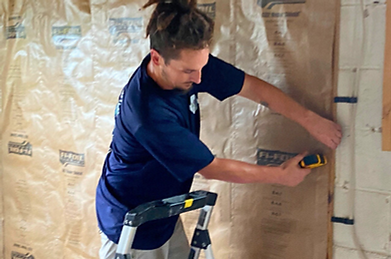
COMMERCIAL / RESIDENTIAL | R-VALUE = Fi-Foil products often provide an R-value boost when combined with air gaps or traditional insulation. Values vary, typically from R-4 to R-7 depending on the configuration and application.
General Uses: Fi-Foil insulation is used to improve energy efficiency in hot climates, reflect radiant heat in attics and garages, supplement traditional insulation methods, and improve comfort in metal buildings.
Why Choose Fi-Foil Radiant Barrier?
Consumers choose fi-foil insulation as it is excellent for reflecting radiant heat (especially in Florida’s sunny climate), its lightweight and easy to install, it enhances other insulation types, and can be used in new builds or retrofits.
Did You Know?
Reflective foil insulation has roots dating back to NASA’s development of radiant barriers to protect spacecraft from extreme temperatures. Fi-Foil Corporation, founded in the 1980s, expanded on this technology to serve residential and commercial building markets, especially in southern regions.
Soundproofing
Soundproofing insulation minimizes the transmission of sound between rooms or from outside sources. While all insulation materials offer some level of sound reduction, certain types are better suited for acoustic control. To reduce sound, some of the typical soundproofing projects Wild Elements Solutions installs are between floors, interior partition walls, home theaters, music studios, and restaurants or shared office buildings. Materials we offer and their STC rating include: Open Cell Spray Foam: STC rating ~37; excellent at reducing airborne sound. Blown-In: STC rating ~44; dense material ideal for retrofitting walls and ceilings. Batting (Fiberglass or Mineral Wool): STC rating ~39–45 depending on thickness and framing. Fi-Foil: Minimal soundproofing; not typically used for acoustic purposes. Closed Cell Spray Foam: STC rating ~38; adds structure but slightly less effective acoustically than open cell.

RESIDENTIAL / COMMERCIAL | STC Rating = Open Cell Spray Foam: ~37, Closed Cell Spray Foam: ~38, Blown-In: ~44, Batting: ~39–45
How is soundproofing installed? Wild Elements Solutions installs each material in accordance with its primary insulation method—sprayed, blown-in, or laid in batts—but with added focus on sealing gaps and full cavity coverage to block sound waves.
Why Choose WES for Soundproofing?
Soundproofing improves comfort, privacy, and productivity. Whether in a home or business setting, reducing noise creates a more peaceful environment. Wild Elements Solutions uses a tailored approach, recommending the right insulation for your sound-control needs—whether it’s spray foam for flexibility, blown-in for density, or mineral wool batts for premium sound dampening.
Did You Know?
In ancient times, soundproofing involved drapes, tapestries, and clay walls. Modern soundproof insulation gained momentum in the mid-20th century as urban noise pollution grew. Today, architects incorporate soundproofing into the design phase of residential and commercial structures.
Waterproofing
Waterproofing coatings are protective layers applied to surfaces like roofs, walls, and exterior structures to prevent water penetration. These coatings help protect properties from storm damage, leaks, and long-term moisture-related issues. Waterproof coatings vary in composition depending on the application. You will typically see waterproofing installed in many different ways and on many types of surfaces. Some common but not limited to areas include interior and exterior walls, sheds and outdoor structures, crawlspaces, decks, and balconies.
How is waterproofing applied?
Wild Elements Solutions applies waterproofing by brush, roller, or spray. The surface must be cleaned and sometimes primed. Multiple coats may be applied depending on the severity of exposure, type of surface area, and the type of material being used.

RESIDENTIAL / COMMERCIAL | Waterproof coatings are not rated for R-value as they are not thermal insulators but can complement thermal insulation by sealing out moisture.
General Uses: Waterproof coatings are essential in Florida’s storm-prone climate for, preventing water intrusion and mold, extending the life of building envelopes, and reducing maintenance and repair costs.
Why Choose WES for Waterproofing?
Wild Elements Solutions customizes the approach to waterproofing, ensuring the plan of action protects you and your investment. Consumers generally choose waterproofing as it protects structures during hurricanes and heavy rain, it’s a cost-effective preventative maintenance, adds durability to existing surfaces, and preserves property value.
Did You Know?
Humans have sought waterproofing for centuries—early solutions included tar, pitch, and even animal fats. Modern waterproofing technology emerged in the 20th century with synthetic polymers, revolutionizing how buildings resist moisture and structural decay.
